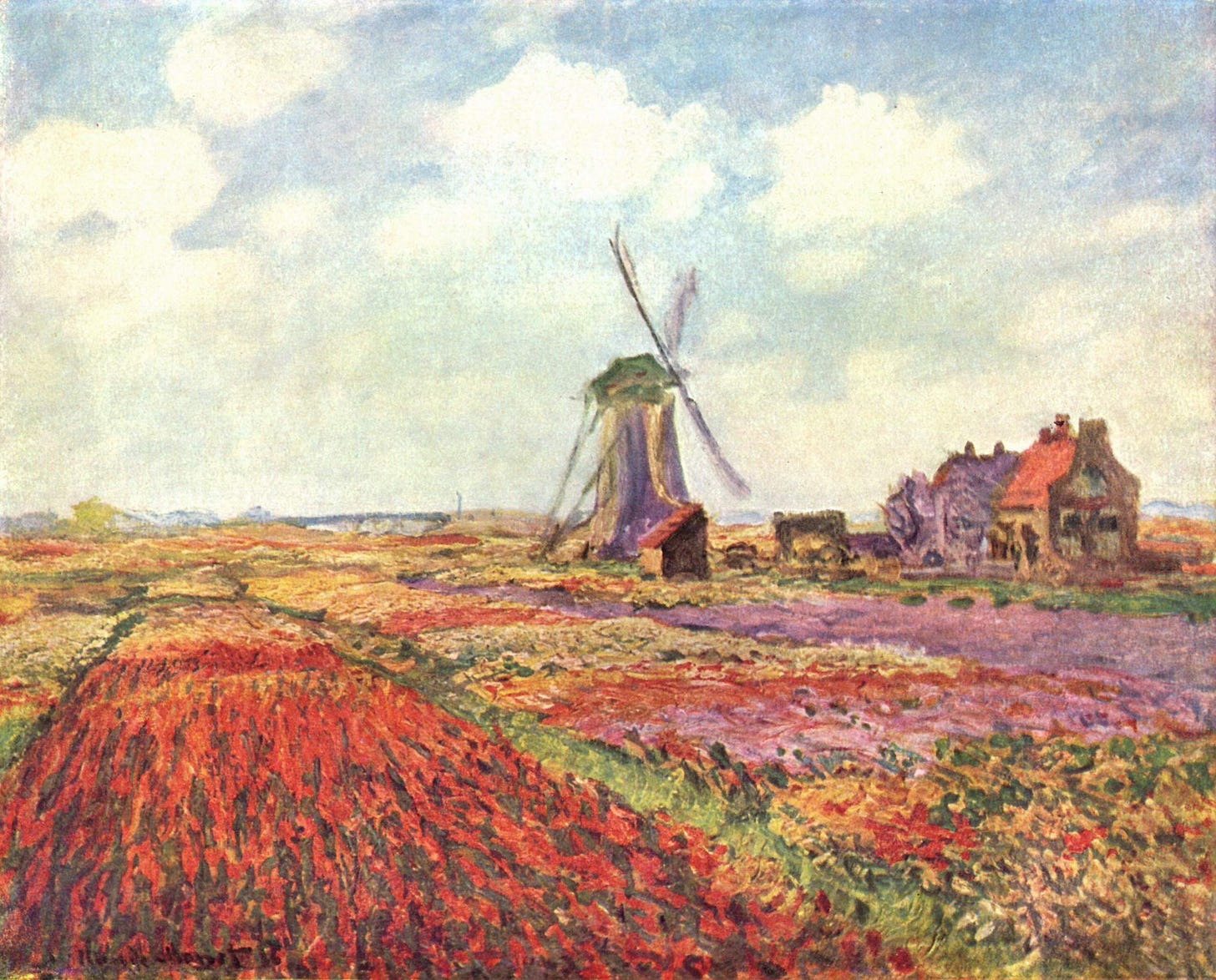WikiBites #4
The first “Stonks” ever and the aftermath: those who moved to other planets with the money made and the apocalyptic scenarios left behind
Hey Starpeople,
Happy New Year to you all!
Do you know the Stonks meme? If so, imagine a 17th century Dutch man shouting “Stonks” while selling a tulip bulb. What happened later to the wallet of the person who bought it may be carefully imagined by looking at the painting that we describe you below.
🏛 THE FIRST “STONKS” EVER
The tulip was probably introduced in Europe in the middle of the 16th century from Turkey and gained extreme popularity in the Netherlands.
Tulips quickly became a luxury commodity and a status symbol as well: members of the middle class therefore began to compete for the possession of the rarest ones. Therefore, prices quickly reached unsustainable levels. In 1623, a single bulb of a specific quality could cost up to ten times the average annual income and were traded even for land, livestock and houses.
Moreover, some traders sold just-planted bulbs or those they intended to plant (some kind of futures on tulips). In February 1637, as they could no longer obtain inflated prices for their bulbs, the speculative bubble exploded. It was thought that the demand for tulips could no longer be maintained at those levels and this opinion spread together with panic. Some people had signed contracts to buy tulips at prices ten times higher than the market price (which had collapsed), while others ended up with owning bulbs that were worth a tenth of the price they had paid for them.
🔬 LOOKING BEYOND THE SOLAR SYSTEM
CHEOPS — an abbreviation of “Characterizing Exoplanet Satellite” — was the first ESA-led mission dedicated solely to the study of planets outside the solar system and it was launched at the end of 2019.
Unlike many other exoplanet missions, CHEOPS will gather data on exoplanets already found, helping researchers figure out how these worlds were built.
While orbiting Earth, CHEOPS will spend 3 years and a half looking beyond the solar system for exoplanetary transits: subtle dips in starlight that occur when a planet crosses in front of its sun. The bigger the planet, the more starlight it blocks. By measuring how much the star darkens, researchers will be able to deduce the planet’s girth.
The focus will be to precisely measure the sizes of roughly 500 planets. By combining the sizes with measurements of mass, obtained by ground-based telescopes that record how fast a host star gets whipped around by a planet’s gravity, astronomers will be able to calculate each planet’s density, a key metric for figuring out what these planets are made of. Astronomers will also look for hints of atmospheres by tracking how quickly the starlight dims just before and after a transit.
And there’s always the chance that some unexpected planets will wander in front of their stars while CHEOPS is watching.
🎨 GUSTAVE DORÉ – THE ENIGMA (1871)
Gustave Doré painted The Enigma together with two other monumental works one year after the Franco-Prussian war and the consequential loss of Alsace-Lorraine. The painting represents an apocalyptic scenario that recalls those the painter produced for illustrating Dante’s Inferno (1861).
Under a dark sky, on the top of a hill strewn with bodies, a winged woman, perhaps an allegoric representation of France, begs the Sphinx for answers. In the background, smoke rising from Paris symbolizes the defeat of France, enhancing the tragic tension of the painting.
Even though the sphinx has always aroused fear and terror, in this case she seems moved by the call of the woman who, desperate, implores her.






